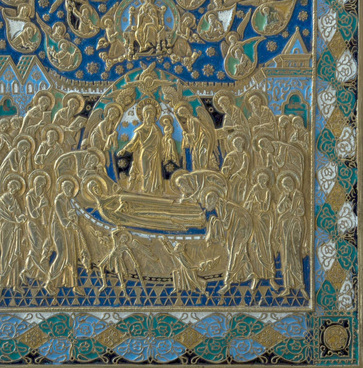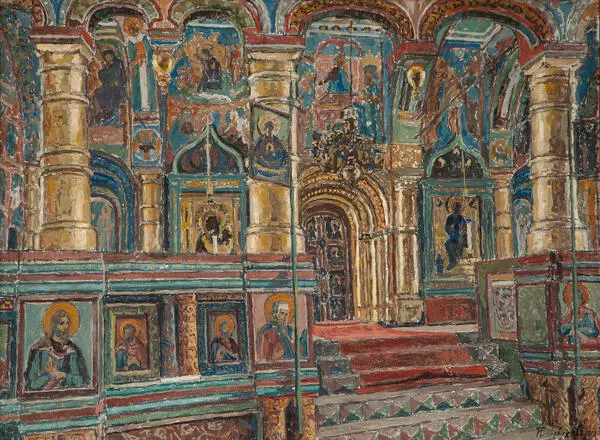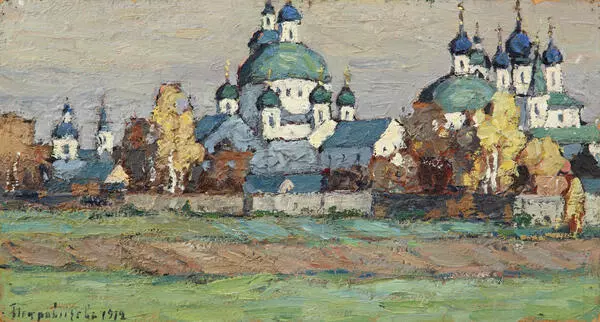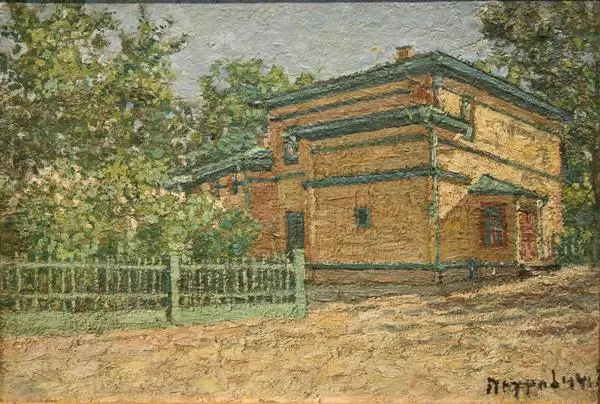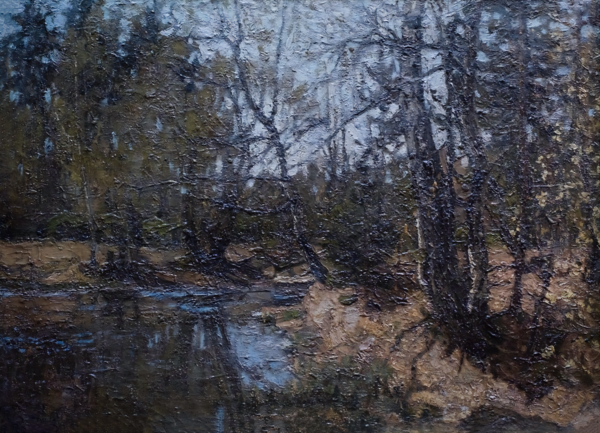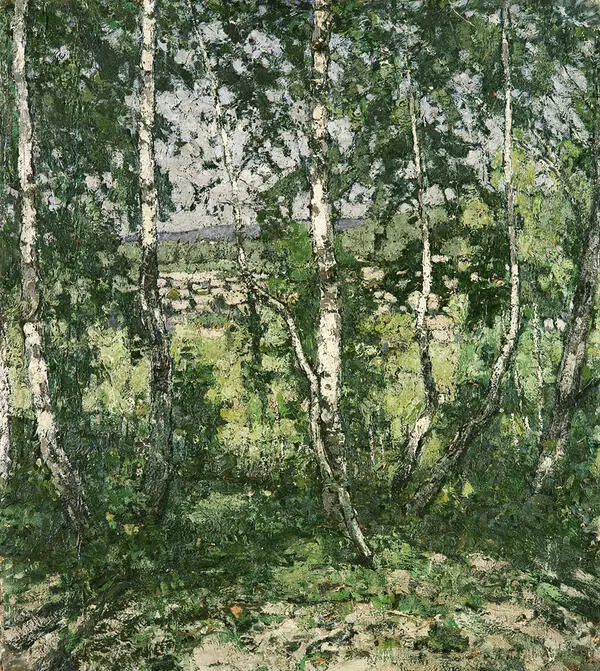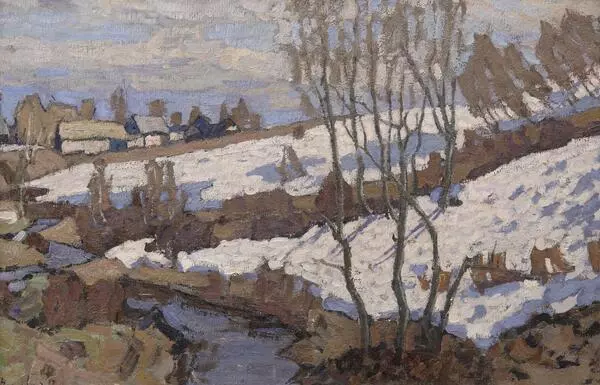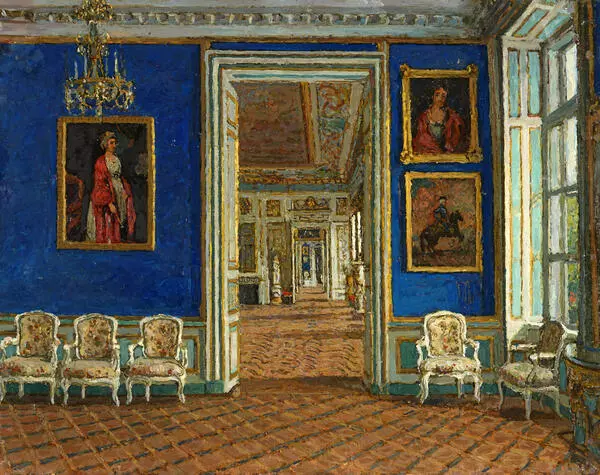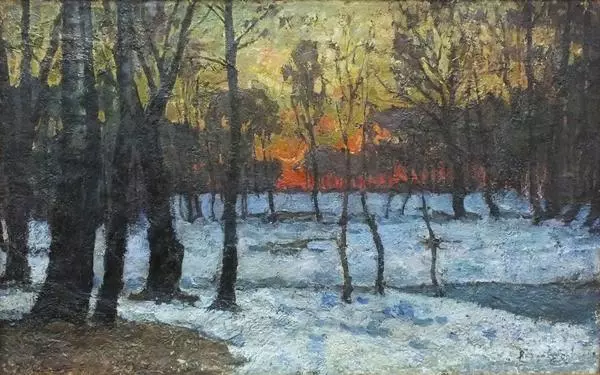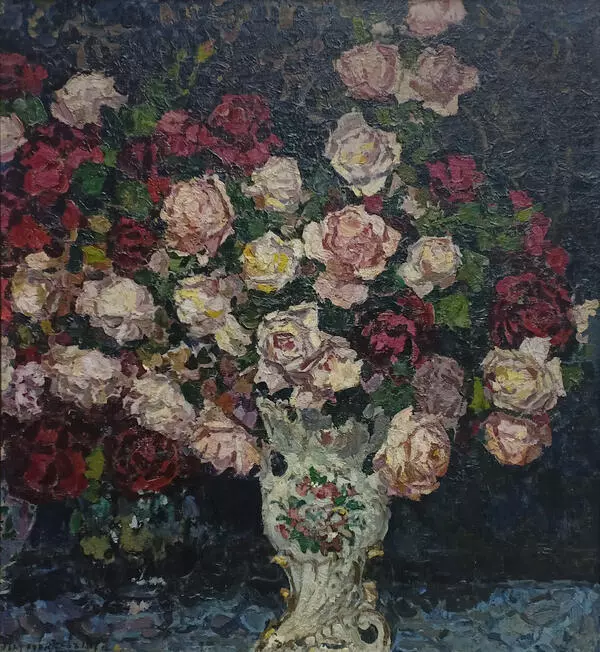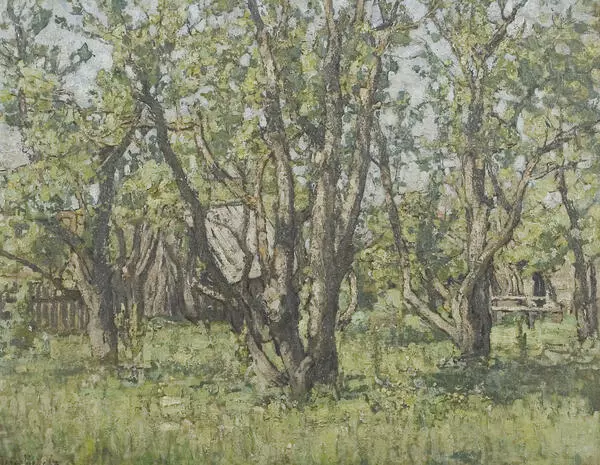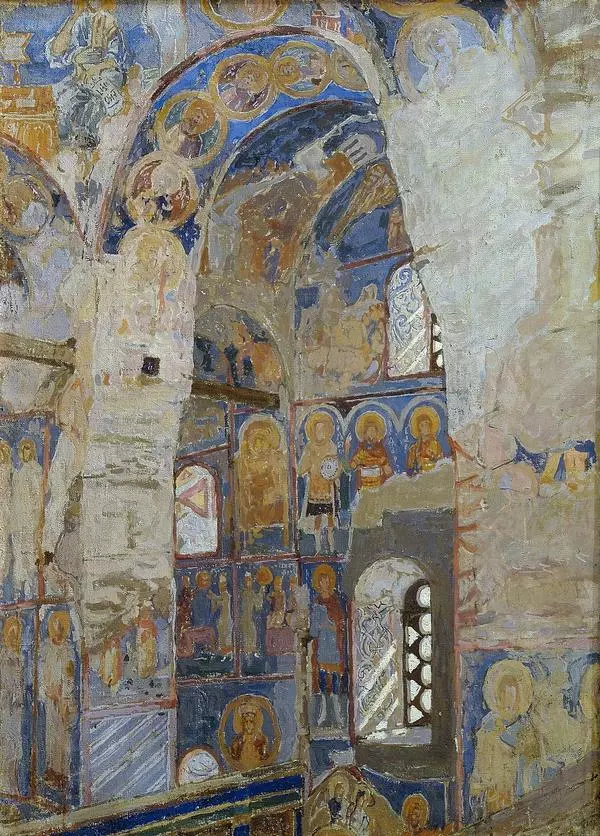Pyotr Ivanovich Petrovichev was born into a peasant family in the Rostov Uyezd, Yaroslavl Governorate, in 1874. Even as a child, he showed a penchant for painting and was sent to study to become an icon painter.
A chance meeting in the studio with the outstanding war artist Vasily Vasilyevich Vereshchagin changed the fate of the future painter. At the age of 16, Petrovichev left the icon painting workshop and went to Moscow, where, on the recommendation of Vereshchagin, he entered the Moscow School of Painting, Sculpture and Architecture.
During his studies at the school, the landscape workshop was revived — it was headed by Isaac Ilyich Levitan. Petrovichev soon became his favorite student. Levitan helped him develop his talent.
Pyotr Petrovichev’s student works repeatedly received high praise and awards, which allowed him to actively engage in the artistic life of the capital.
The Novokuznetsk Art Museum houses his painting “In Petrovsky Park”. It was acquired by the museum in 1971 from the collector Yuly Vladimirovich Nevzorov.
In the painting, the artist depicted one of the famous sights of Moscow — a great example of park architecture of the 19th century, named in honor of Emperor Peter I. The beholder sees the shore of the lake located in the quiet old park. The three elements — water, earth and air — are balanced. The painting brings a sense of peace: the artist painted a protected corner of the park, where human presence seems diminished, houses hide in the distance behind trees, and a narrow path is empty. The horizontal format of the canvas and the predominance of horizontal lines create the feeling of an infinitely extended space stretching further beyond the frame.
The artist titled his painting “In Petrovsky Park”,
although in 1917 the park received a new name — Freedom Park. This suggests
that the artist remained faithful to a bygone era and for him the old names
were closer and more real than modern ones. Indeed, despite all the new
fashions and currents that arose in the 1920s, Pyotr Petrovichev was true to
himself, moving along his chosen path of Realism.


